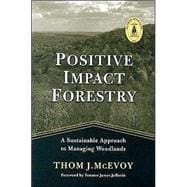
Note: Supplemental materials are not guaranteed with Rental or Used book purchases.
Purchase Benefits
What is included with this book?
| Foreword by Senator James Jeffords | xiii | ||||
| Preface | xvii | ||||
| Chapter 1. Forestry's Past Is Prologue | 1 | (28) | |||
|
3 | (8) | |||
|
11 | (4) | |||
|
15 | (4) | |||
|
19 | (3) | |||
|
22 | (7) | |||
| Chapter 2. Understanding Forest Ecosystems | 29 | (42) | |||
|
32 | (6) | |||
|
38 | (14) | |||
|
52 | (4) | |||
|
56 | (7) | |||
|
63 | (2) | |||
|
65 | (6) | |||
| Chapter 3. Creating Disturbances in Forests through Silviculture | 71 | (36) | |||
|
75 | (6) | |||
|
81 | (7) | |||
|
88 | (4) | |||
|
92 | (6) | |||
|
98 | (4) | |||
|
102 | (5) | |||
| Chapter 4. Harvesting and Selling Timber | 107 | (29) | |||
|
109 | (8) | |||
|
117 | (4) | |||
|
121 | (2) | |||
|
123 | (2) | |||
|
125 | (6) | |||
|
131 | (2) | |||
|
133 | (3) | |||
| Chapter 5. Positive Impact Harvesting Practices | 136 | (35) | |||
|
139 | (4) | |||
|
143 | (12) | |||
|
155 | (6) | |||
|
161 | (10) | |||
| Chapter 6. Managing Forests for Wildlife and Nontimber Products | 171 | (21) | |||
|
176 | (3) | |||
|
179 | (4) | |||
|
183 | (9) | |||
| Chapter 7. The Future of Forests and Forest Products | 192 | (24) | |||
|
196 | (3) | |||
|
199 | (3) | |||
|
202 | (6) | |||
|
208 | (3) | |||
|
211 | (5) | |||
| Chapter 8. Intergenerational Planning Methods for Forests | 216 | (15) | |||
|
218 | (2) | |||
|
220 | (6) | |||
|
226 | (5) | |||
| Epilogue | 231 | (6) | |||
| Appendix A. Online Resources | 237 | (2) | |||
| Appendix B. Forestry-Related Internet Sites of Interest | 239 | (2) | |||
| Appendix C. Public Sources of Forestry Assistance | 241 | (4) | |||
| Glossary | 245 | (10) | |||
| Literature Cited | 255 | (4) | |||
| Index | 259 |
The New copy of this book will include any supplemental materials advertised. Please check the title of the book to determine if it should include any access cards, study guides, lab manuals, CDs, etc.
The Used, Rental and eBook copies of this book are not guaranteed to include any supplemental materials. Typically, only the book itself is included. This is true even if the title states it includes any access cards, study guides, lab manuals, CDs, etc.